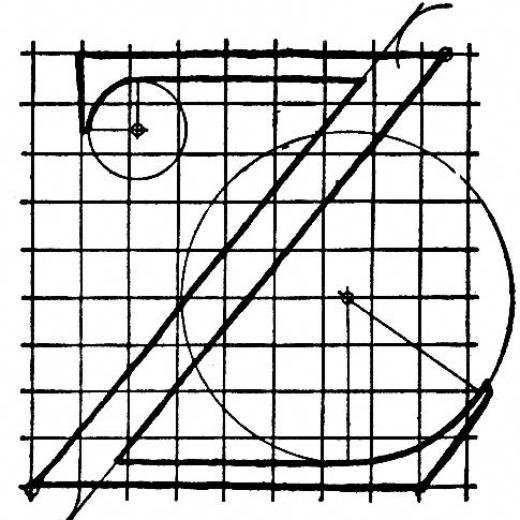Characters and Their Sensory Limitations: POV and Description by Susanne Lakin
 Today we welcome a new guest writer to Writer’s Fun Zone, Susanne Lakin, who is stopping by to chat with us today about “Characters and Their Sensory Limitations: POV and Description.” Enjoy!
Today we welcome a new guest writer to Writer’s Fun Zone, Susanne Lakin, who is stopping by to chat with us today about “Characters and Their Sensory Limitations: POV and Description.” Enjoy!
***
Few writers pay much attention to character placement, but this is something of paramount concern to filmmakers, and a subject I cover in depth in Shoot Your Novel. A director has to lay out his camera shots, deciding when a close-up shot would be more effective than a long shot, for example. He may want the camera positioned far away from the action, to make details unclear and evoke curiosity or misinterpretation. Or he may have an extreme close-up to ensure viewers don’t miss a tiny detail that is crucial to the plot.
Adept novelists mimic this technique in their books to good effect. But if writers don’t think through where they are placing their characters, they may end up with description issues. Meaning, their character is reacting to and processing details that she really can’t react to or process—due to where she is in the scene.
Here’s what I mean.
Before:
Tracy stared out the windshield of her old VW bug at the red light. Would it never change?
Then she spotted a boy about seven or eight across the four-lane intersection, pounding on the Walk button over and over. He was humming something as he poked, straddling a too-large bike, with his new Nikes digging into the dirt. He looked at his feet, obviously unaware that all his button pressing was preventing the light from changing.
Tracy gritted her teeth, then swung the door open. The heat blasted in. She glanced around. No other cars on this Sunday morning in this tiny town she’d been driving through mindlessly.
She stepped out onto the sizzling pavement.
The boy looked up and saw her glowering at him. His face paled and he sucked in a breath, no doubt figuring how to make his escape. He hopped on his bike but didn’t see the crack in the pavement. His front tire slipped in and wrenched the bike, which caused it to ricochet off the pavement. The boy slammed into the handlebars, which smacked him right in the nose, breaking it.
He quickly righted himself and looked up to see if she’d witnessed his mishap and flushed almost purple when he realized she had.
Mortified, and desperate to get away, he pulled with all his might and managed to lift the front wheel up above his head so he could pivot the bike around, but as he did so, the bike and its rider fell to the ground. He lay on the smoldering pavement like a fish out of water, wiggling and thrashing, his little legs tangled up in the metal spokes.
Then Tracy spotted something in the corner of her eye. She spun around. Behind her, the car lurched forward, almost knocking her down.
Oh no, I forgot to put the car in Park.
She ran over to her car door, hoping to jump inside, but smacked into it instead. Her right foot locked as the tire rolled over her shoelace and pinned her in place. She fell to her knees and watched helplessly as the unmanned car continued rolling across the street, heading straight for the little boy who was still flailing about beneath the giant bike, his face stricken with fear.
“Get up! Get out of the way!” She screeched as she struggled to her feet and scrambled to run after the car. Judging the distance between the car and boy, she knew she was never going to make it.
The boy wiggled and whimpered as Tracy ran, panting, trying to reach him.
Just in time, she caught up to the rolling car, threw open the door, lunged over the seat, and pulled up the emergency brake. She stared out the windshield, gasping for breath. The boy’s bike was mangled under her tires. The handlebars were crushed.
Tracy turned around and saw the little boy sitting on the curb across from her, his head buried in his arms, trying not to cry. She ran over to him, relieved he was alive.
“Are you okay?” she asked him.
He nodded but wouldn’t lift his head to look at her.
She let out a breath, her shoulders sagging. “I’m sorry about your bike. I’ll buy you another one.”
Did you spot all the problems with the description in this passage? At first glance it may seem as if it all works. But let’s take a look at the After passage and then tear this apart.
After:
Tracy stared out the windshield of her old VW bug at the red light. Would it never change?
Then she spotted a boy about seven or eight across the four-lane intersection, pounding on what she guessed was the Walk button over and over. He was straddling a too-large bike, kicking one foot into the dirt. He looked down, obviously unaware that all his button pressing was preventing the light from changing.
Tracy gritted her teeth, then swung the door open. The heat blasted in. She glanced around. No other cars on this Sunday morning in this tiny town she’d been driving through mindlessly.
She stepped out onto the sizzling pavement.
The boy looked up and saw her glowering at him. He stiffened, then hopped on his bike. Suddenly the bike toppled sideways and ricocheted off the pavement. The boy slammed into the handlebars and smacked his face.
He quickly righted himself and looked over at her. Then he lifted the front wheel up above his head and pivoted the bike around, but as he did so, the bike and its rider fell to the ground. He lay on the pavement like a fish out of water, wiggling and thrashing, his little legs tangled up in the metal spokes.
Then Tracy heard something behind her. She spun around and saw the car lurching forward, almost knocking her down.
Oh no, I forgot to put the car in Park.
She ran over to her car door, hoping to jump inside, but smacked into it instead. Her right foot locked as the tire rolled over her shoelace and pinned her in place. She fell to her knees and watched helplessly as the unmanned car continued rolling across the street, no doubt heading straight for the little boy. Was he still tangled in his bike? She hoped he’d gotten out but knew it was unlikely.
“Get up! Get out of the way!” She screeched as she struggled to her feet and scrambled to run after the car. Judging the distance between the car and boy, she knew she was never going to make it. Across the intersection, she spotted the boy—still trapped. Tracy ran, panting, trying to reach him.
Just in time, she caught up to the rolling car, threw open the door, lunged over the seat, and pulled up the emergency brake. She stared out the windshield, gasping for breath. The boy’s bike was nowhere to be seen. Oh no, did I kill him? She pictured the gruesome scene—the bike mangled under her wheels, the handlebars crushed. And the little boy . . .
Tracy turned around in the seat, craning to see out the side windows. Oh, thank God! The little boy was sitting on the curb across from her, his head buried in his arms. She ran over to him, relieved he was alive.
“Are you okay?” she asked him.
He nodded but wouldn’t lift his head to look at her.
She let out a breath, her shoulders sagging. “I’m sorry about your bike. I’ll buy you another one.”
The details might be minor, but we want to be accurate in our descriptions, and the Before passage reveals a lot of problems as the scene is played out in Tracy’s POV. Did you notice these things?
- She’s too far away to hear the boy humming or know what brand of shoes he’s wearing.
- She’s too far away to see his face pale or hear him suck in a breath (and no doubt the sun is glaring on this hot morning, making visibility even worse).
- She can’t see a crack in the pavement to know that’s what caused the bike to fall.
- She’s too far away to see that the bike hit him directly in the nose or that it may have broken it.
- She can’t know he’s mortified, or desperate to get away, or that he’s pulling with all his might. From where she is, she might be able to tell he’s struggling.
- She can’t see something behind her from the corner of her eye. She has to completely spin around to notice the car is moving behind her.
- When she’s on her knees next to the car and it starts to roll away, she isn’t in position to see clearly that the boy is in the car’s path and that he’s still tangled in the spokes. She’s too far away to see his face stricken with fear.
- She might be able to see the boy wiggle, but if the car is almost upon him, and she’s coming up alongside the car, it’s not likely. And she wouldn’t hear him whimpering. Maybe shouting, yes.
- She can’t see the mangled bike under her tires as she looks forward out the windshield.
- If she turns around, that implies she sees the boy behind her, through the back window. But he’s sitting on the curb to her side.
- She can’t really know he’s trying not to cry. His head is buried in his arms.
It’s so easy for writers to hurry through such descriptions without taking time to envision the scene’s details and ensuring the POV character can actually see, hear, and do all the things written. By picturing a movie camera capturing the action, writers will catch these kinds of description errors.
Put yourself in your character’s shoes and try to see what she can see and hear what she can hear. If you need your character to notice small details, get her closer. Conversely, if you want her to miss certain details, put her further away. It’s all about distance when it comes to POV perspective.
***
ABOUT THE AUTHOR
C.S. Lakin is the author of sixteen novels and five writing craft books. Her award-winning blog Live Write Thrive gives tips and writing instruction for both fiction and nonfiction writers, and her Writer’s Toolbox series gives fiction writers everything they need to know to create compelling, solid stories.
is the author of sixteen novels and five writing craft books. Her award-winning blog Live Write Thrive gives tips and writing instruction for both fiction and nonfiction writers, and her Writer’s Toolbox series gives fiction writers everything they need to know to create compelling, solid stories.
The newest release—5 Editors Tackle the 12 Fatal Flaws of Fiction Writing—is available here and features more than sixty detailed Before and After examples of flawed and corrected passages to help authors learn to spot flaws in their writing.
You can check out all her books on her Amazon Author Page.







Thanks for sharing with us your great editing tips, Susanne!
Enlightening… thank you!
Glad you enjoyed this post, Kevin.